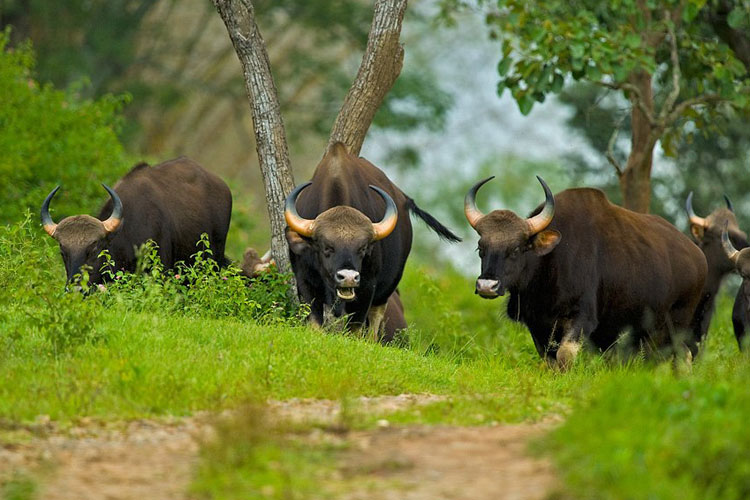Habitat destruction, hunting and socio-economic pressures are leading to low densities of large ungulates in tropical forests. With traditional population assessment methods proving to be unreliable, the need for innovative applications that tackle issues of imperfect detections becomes paramount.
A. M. Gopalaswamy, K. U. Karanth, N. S. Kumar and D. W. Macdonald estimate forest ungulate densities using abundance models of occupancy. These are the highlights of their study published in the journal Animal Conservation in 2012.
- A field survey of ungulate signs was conducted to estimate ungulate densities using occupancy and distance sampling approaches.
- The study focused on five species of large tropical ungulates: Chital (Axis axis), Sambhar (Rusa unicolor), Gaur (Bos gaurus), Wild Pig (Sus scrofa) and Muntjac or Barking Deer (Muntiacus muntjak).
- This approach can be applied to understanding and monitoring distribution and abundance of many other ungulate species.
Study site
Bhadra Wildlife Sanctuary in Karnataka that supports populations of all five forest ungulate species. The line transect survey was carried out between April-May 2007 and the occupancy survey during the month of June 2007, when the area received its pre-monsoon showers.
Methods
A practical field sampling and density estimation protocol was adopted based on field counts of easily detectable signs (dung or tracks) for five species of ungulates. These species exhibit different social behaviors, body sizes, diets, habitat preferences and vary in population densities. A grid cell size of 3.24 km2, large enough to include the daily movement of the study species was chosen based on home range size and movement rates. Skilled field personnel located fresh tracks or dung of ungulates in sampling routes within each cell. To obtain independent estimates of ungulate density, standard line transect sampling method was applied based on visual detections.
The results
- For chital, sambar, gaur and wild pig, the occupancy model of AOS (Abundance-Occupancy-Spatial) fit better, indicating heterogeneity in detection probabilities among cells.
- The density estimates were sambar= 4.40, chital= 8.88, muntjac= 4.35, gaur= 3.86 and wild pig= 2.46.
- Comparing different survey methods show that cluster estimates derived from two different approaches match well for all species except muntjac. The specification of cell size was targeted primarily for larger ungulate species, and hence was found to be too large for muntjac.
Conservation Implications
To understand issues that influence forest structure and dynamics by large ungulates, it is important to obtain reliable information on their densities. Accurate biological knowledge of the target species is needed to develop suitable field-based sign surveys. This approach employs survey design and protocols based on ungulate species biology, which can be applied to varying group sizes. Future research in this domain can be utilized for extensive spatial and temporal studies of ungulate species of high conservation priority.


 CI is a non-profit, non-commercial portal that aims to facilitate wildlife and nature conservation by providing reliable information and the tools needed to campaign effectively.
CI is a non-profit, non-commercial portal that aims to facilitate wildlife and nature conservation by providing reliable information and the tools needed to campaign effectively.